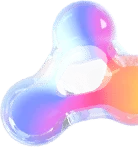The lifecycle of machine learning doesn’t end the moment a model is deployed–far from it. Model performance monitoring is a basic operational task that is implemented after an AI model has been deployed. ML teams need a strategy to quickly adapt ML models to the constantly changing patterns in real-world data.
Machine learning model monitoring is the tracking of an ML model’s performance in production. Monitoring machine learning models is an essential feedback loop of any MLOps system, to keep deployed models current and predicting accurately, and ultimately to ensure they deliver value long-term.
When live models encounter data that is significantly different from the training data—due either to limitations in the training data or from changes in the live environment—previous data becomes obsolete.
By definition, ML models in production make inferences on constantly changing data. Even models that have been trained on massive data sets with the most meticulously labelled data start to degrade over time, due to concept drift. Changes in the live environment–due to changing behavioral patterns, seasonal shifts, new regulatory environments, market volatility, etc–can have a big impact on a trained model’s ability to make accurate predictions.
Without dedicated model monitoring best practices, ML and business teams have no way of knowing when the predictive performance of a model is starting to decline. If drift occurs without detection, businesses can be exposed to serious risks and erode end user trust in customer-facing applications.
To protect the value of AI applications, ML teams need to implement a system for early and proactive detection of deviations, without having to monitor models manually or build additional tooling in-house. There are several tools on the market that offer prebuilt monitoring capabilities that do not require coding, making them ideal for a team with diverse skill sets.
When choosing a solution, here are some features to look out for:
The simplest way to implement model monitoring across the organization is to use a system that is natively built-in to the existing MLOps platform. This allows anyone on the team to monitor any model in one centralized dashboard.
What happens when drift is detected? Automating the entire training pipeline, including all relevant steps in the pipeline, can save teams lots of time. The output is a production-ready model that is ready be deployed.
The core function of any monitoring solution. Even with hundreds of models running simultaneously, a drift-aware system will automatically detect drift, anomalies, data skew, and model drift. It’s important to note that if your use case includes streaming data, the monitoring system needs to support real-time detection.
Maintain consistency between projects and improve collaboration across teams by using a feature store. Feature vectors and labels can be stored and analyzed in the feature store, and then easily compared to the trained features and labels running as part of the model development phase.

